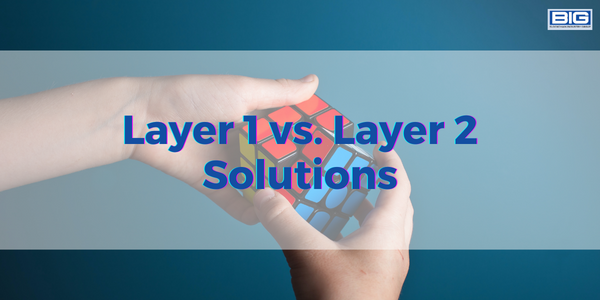
Blockchain technology has the potential to revolutionize a wide range of industries, from finance and banking to supply chain management and beyond. One key aspect of this technology is the distinction between “layer 1” and “layer 2” solutions.
Layer 1 Solutions
Layer 1 solutions refer to the underlying infrastructure of a blockchain network, such as the protocols and algorithms that govern how the network functions. These solutions form the foundation upon which the rest of the network is built, and they play a crucial role in determining the security, decentralization, and scalability of the network.
Examples of layer 1 solutions include Bitcoin, Ethereum, and other public blockchain networks. These networks are decentralized, meaning that they are not controlled by any single entity or organization. Instead, they rely on the collective power of their users to maintain their integrity and security.
One of the key benefits of layer 1 solutions is their level of security and decentralization. Because they are the foundation upon which the entire network is built, layer 1 solutions are generally considered to be more secure and decentralized than other types of blockchain solutions. This is especially important in industries where security and decentralization are critical, such as finance and banking.
Layer 1 solutions are also typically more rigid and slower to adapt to changing circumstances than other types of blockchain solutions. This can be a disadvantage in situations where the needs of a particular industry or use case are evolving rapidly. However, this rigidity is also one of the key factors that contribute to the security and stability of layer 1 solutions.
Layer 2 Solutions
Layer 2 solutions are built on top of an existing layer 1 infrastructure. They are designed to address specific challenges or opportunities that may arise in a particular industry or use case, and they aim to improve the scalability, efficiency, or security of a blockchain network.
Examples of layer 2 solutions include the Lightning Network for Bitcoin and the Raiden Network for Ethereum. These solutions are designed to address specific challenges that have emerged as these networks have grown and evolved. For example, the Lightning Network is designed to improve the scalability of the Bitcoin network by allowing users to create “off-chain” channels for conducting transactions. This can help to reduce the load on the network and make it more efficient.
One key benefit of layer 2 solutions is their level of flexibility and adaptability. Because they are built on top of an existing layer 1 infrastructure, they are able to take advantage of the security and decentralization of the underlying network while also offering a higher degree of flexibility and adaptability. This can be a major advantage in situations where the needs of a particular industry or use case are evolving rapidly.
Layer 2 solutions are also generally more efficient than layer 1 solutions, as they are able to offload certain tasks and processes to the layer 1 infrastructure. This can make them more scalable and capable of handling larger volumes of transactions.
Blockchain Dominance: Competing Countries
—
Blockchain vs. Bitcoin: What’s the Difference?
—
Blockchain, AI, Web3, & Metaverse’s Use Cases
Despite these benefits, layer 2 solutions are not without their drawbacks. They may be less secure and decentralized than layer 1 solutions, as they rely on the underlying layer 1 infrastructure for their security and stability. Additionally, they may be more complex and difficult to implement than other types of blockchain solutions.
Despite these differences, both layer 1 and layer 2 solutions have an important role to play in the development and deployment of blockchain technology. Layer 1 solutions provide the foundation upon which layer 2 solutions are built, and together, they offer a powerful and flexible approach to solving a wide range of challenges in a variety of industries. As the use of blockchain technology continues to grow and evolve, we can expect to see both layer 1 and layer 2 solutions playing an increasingly important role in shaping the future of this exciting and transformative technology.



